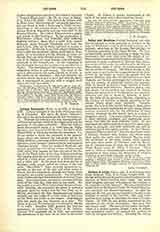

Julian and Basilissa, SAINTS, husband and wife, died at Antioch or, more probably, at Antinoe, in the reign of Diocletian, early in the fourth century, on January 9, according to the Roman Martyrology, or January 8, according to the Greek Menaea. We have no historically certain data relating to these two holy personages, and more than once this Julian of Antinoe has been confounded with Julian of Cilicia. The confusion is easily explained by the fact that thirty-nine saints of this name are mentioned in the Roman Martyrology, eight of whom are commemorated in the one month of January. But little is known of this saint, once we put aside the exaggerations of his Acts. Forced by his family to marry, he agreed with his spouse, Basilissa, that they should both preserve their virginity, and further encouraged her to found a convent for women of which she became the superior, while he himself gathered a large number of monks and undertook their direction. Basilissa died a very holy death, but martyrdom was reserved for Julian. During the persecution of Diocletian he was arrested, tortured, and put to death at Antioch, in Syria, by the order of the governor, Martian, according to the Latins; at Antinoe, in Egypt, according to the Greeks, which seems more probable. Unfortunately, the Acts of this martyr belong to those pious romances so much appreciated in early times, whose authors, concerned only for the edification of their readers, drowned the few known facts in a mass of imaginary details. Like many similar lives of saints, it offers miracles, prodigies, and improbable utterances, that lack the least historical value. In any case these two saints must have enjoyed a great reputation in antiquity, and their veneration was well established before the eighth century. In the “Martyrologium Hieronymianum” they are mentioned under January 6; Usuard, Ado, Notker, and others place them under the ninth, and Rabanus Maurus under the thirteenth of the same month, while Vandelbert puts them under February 13, and the Menology of Canisius under June 21, the day to which the Greek Menaea assign St. Julian of Caesarea. There used to exist at Constantinople a church under the invocation of these saints, the dedication of which is inscribed in the Greek Calendar under July 5.
LEON CLUGNET


